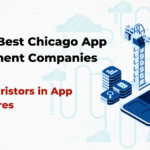
In the current landscape of intense digital competition, organizations persistently seek novel methods to enhance conversion rates and boost customer engagement. A prominent technique that is increasingly being adopted is Natural Language Processing (NLP). For companies focused on conversion rate optimization company, incorporating NLP into landing pages can lead to more tailored experiences, enhanced customer interactions, and, ultimately, increased conversion rates. This article will examine how NLP can optimize landing pages and how software development firms can utilize these strategies to improve their performance.
What is NLP (Natural Language Processing)?
Natural Language Processing (NLP) is a subset of artificial intelligence (AI) dedicated to the interaction between computers and human languages. The primary objective of NLP is to equip machines with the ability to comprehend, interpret, and produce human language in a significant manner. Various applications utilize NLP techniques, such as sentiment analysis, chatbots, voice search enhancement, and automated content generation.
In the realm of landing page optimization, NLP plays a crucial role in examining customer language patterns, search intent, and behaviors, thereby allowing businesses to develop more tailored and pertinent experiences for their users.
Why a Conversion Rate Optimization Company Uses NLP for Landing Pages
A conversion rate optimization company understands that improving the effectiveness of a landing page requires more than just modifying design elements. The significance of content relevance, emotional resonance, and customized language are essential factors. Consequently, natural language processing (NLP) plays a crucial role in revolutionizing CRO efforts.
1. Understanding Customer Intent
Natural Language Processing (NLP) enables organizations to interpret customer language and the underlying intentions of search queries. Regardless of whether users are looking for products, evaluating services, or searching for information, an NLP-based strategy discerns these intentions and modifies the content of the landing page to align with them.
2. Enhanced Personalization
A tailored experience enhances conversion rates. By utilizing natural language processing, companies can adapt landing page headlines, calls to action, or product suggestions in real-time, reflecting the customer’s search history or behavioral trends. This approach leads to content that aligns more effectively with user preferences.
3. Optimizing for Voice Search
The increasing prevalence of smart assistants and voice search necessitates the optimization of landing pages for conversational inquiries. Natural Language Processing (NLP) facilitates the interpretation of these natural, long-tail voice queries, allowing landing pages to better meet user expectations and enhance search visibility.
NLP Techniques Used by a Conversion Rate Optimization Company
NLP techniques enable a conversion rate optimization company to examine customer behavior, intent, and emotions, facilitating the development of highly relevant and personalized landing pages. By utilizing sentiment analysis, entity recognition, and topic modeling, organizations can tailor content to meet user expectations, thereby enhancing conversion rates.
1. Sentiment Analysis
Through the examination of customer reviews, feedback, and social media interactions, a conversion rate optimization company can ascertain user sentiments regarding a product or service. This understanding enables businesses to customize the messaging on landing pages, aligning it with favorable perceptions while also addressing prevalent issues.
Example
- Should users indicate dissatisfaction with shipping durations, the landing page may emphasize “rapid delivery” to alleviate this concern.
2. Entity Recognition
Entity recognition involves the identification of significant terms, including product names, services, or features, within user inquiries. This process enables businesses to tailor landing page content to correspond with the particular entities that users are seeking.
Example
- When a visitor queries “affordable project management tools,” the landing page has the capability to dynamically present content that aligns with the term “project management tools” while highlighting cost-effectiveness.
3. Topic Modeling
Topic modeling serves to uncover significant themes present within a collection of text. A software development company or a contract research organization (CRO) can employ this method to ascertain which subjects resonate most with their intended audience, thereby enabling the creation of landing pages that cater to those specific interests.
Example
- Should data indicate that users are consistently searching for “security” within software services, the landing page may be tailored to highlight secure solutions.
4. Keyword Intent Matching
Natural Language Processing (NLP) facilitates enhanced keyword matching by discerning the underlying user intent associated with search queries. A conversion rate optimization company guarantees that landing pages are aligned with both high-intent and low-intent keywords, thereby attracting a wider spectrum of potential leads.
Example
- High-intent search: “Purchase accounting software” → The webpage is designed to facilitate immediate conversions.
- Low-intent search: “Advantages of accounting software” → The webpage offers informative content accompanied by subtle calls to action.
The Role of a Software Development Company in Implementing NLP for CRO
A software development company is essential in creating the infrastructure required for landing pages powered by natural language processing. The following outlines the process:
1. Integrating NLP APIs and Tools
Software development teams incorporate NLP libraries and APIs, including Google NLP, IBM Watson, or Microsoft Azure, into landing page frameworks to assess user data and provide personalized content in real-time.
2. Developing Dynamic Content Management Systems (CMS)
A software development company has the capability to design a dynamic content management system (CMS) that autonomously refreshes landing page content by utilizing insights from natural language processing (NLP). This system can modify elements such as product descriptions, headlines, or calls to action (CTAs) in response to user interactions.
3. Automating A/B Testing with NLP Insights
Developers leverage natural language processing to streamline A/B testing by determining which content variations yield superior performance based on user sentiment and engagement metrics. This approach minimizes the uncertainty associated with conversion rate optimization initiatives.
Best Practices for Using NLP to Optimize Landing Pages
The application of Natural Language Processing (NLP) on landing pages necessitates the use of strategic methods to enhance user engagement and conversion rates. Adhering to established best practices guarantees that the content resonates with user intent, provides tailored experiences, and achieves the best possible outcomes.
1. Focus on Conversational Keywords
To improve the comprehension of natural language inquiries, it is advisable to optimize landing pages for conversational and long-tail keywords in order to align with the trends associated with voice search.
2. Create Dynamic and Adaptive CTAs
Utilize insights from natural language processing to adjust calls to action according to user behavior. For instance, if a visitor is in the consideration stage, a call to action such as “Learn More” could prove to be more effective than “Buy Now.”
3. Leverage Real-Time Personalization
Incorporate natural language processing into your landing page to provide tailored content instantaneously. For instance, when a returning visitor accesses your page, present personalized suggestions derived from their previous interactions.
4. Optimize for Sentiment and Intent
Incorporate natural language processing into your landing page to provide tailored content instantaneously. For instance, when a returning visitor accesses your page, present personalized suggestions derived from their previous interactions.
Benefits of NLP-Powered Landing Pages for Conversion Rate Optimization
NLP-driven landing pages improve user experience by synchronizing content with customer intent, resulting in increased engagement and conversion rates. By utilizing real-time personalization and sentiment analysis, companies can refine each interaction to significantly enhance conversion outcomes.
1. Improved User Experience
Utilizing NLP enhances the intuitiveness and relevance of landing pages for users, resulting in increased engagement and reduced bounce rates.
2. Higher Conversion Rates
NLP enhances the ability of businesses to transform visitors into customers by ensuring that content is aligned with user intent and behavior.
3. Increased Search Visibility
Enhancing landing pages through the application of natural language processing (NLP) leads to improved performance in search engine results, particularly for voice search and long-tail queries.
4. Better Lead Qualification
Natural Language Processing enables organizations to pinpoint valuable leads by examining user behavior and language patterns, thereby assisting sales teams in concentrating on the most promising candidates.
Conclusion
The incorporation of Natural Language Processing (NLP) into the optimization of landing pages is revolutionizing customer engagement strategies for businesses. A company specializing in conversion rate optimization utilizes NLP to interpret user intent, tailor content, and improve the overall user experience, leading to enhanced conversion rates. By collaborating with a software development company, businesses can effectively integrate NLP tools and methodologies into their online platforms, ensuring that their landing pages are dynamic and driven by data.
As NLP technology advances, organizations that embrace these sophisticated conversion rate optimization techniques will secure a considerable advantage over their rivals. Through methods such as real-time content personalization, sentiment analysis, and voice search optimization, NLP enables businesses to provide outstanding digital experiences and meet their conversion objectives.





0 Comments